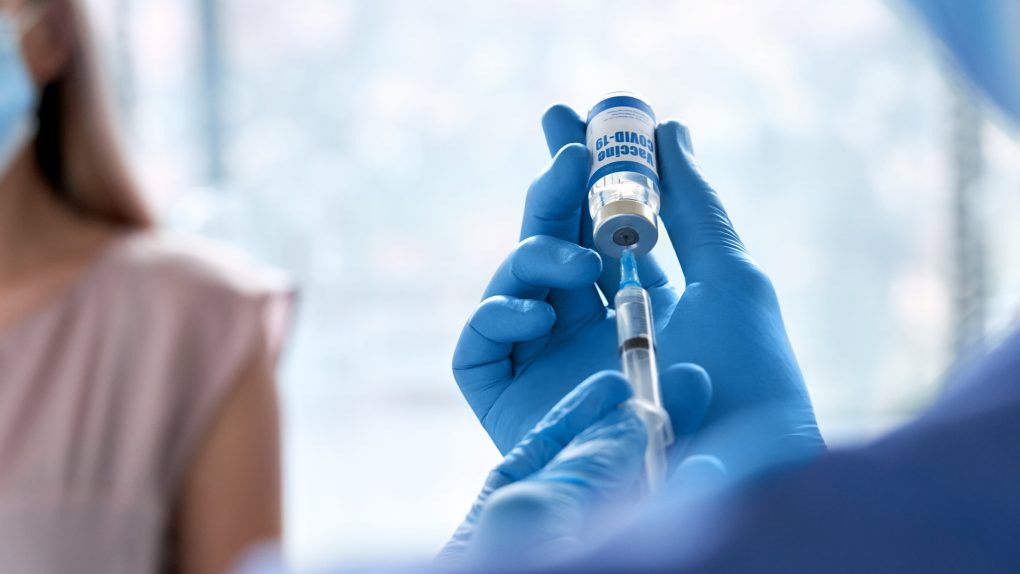- Coronavirus vaccines from Moderna and Pfizer were found in Phase 3 trials to be 95% effective at preventing a COVID-19 infection.
- Side effects from both vaccines are rare. When they do occur, the most common symptoms include fever, chills, and headache. One clinical trial volunteer likened it to experiencing a “severe hangover.”
- Some less common side effects from the vaccine include are possible, and many people are unaware of what to expect.
One of the more interesting anecdotes surrounding Pfizer’s coronavirus vaccine was relayed by Dr. Anthony Fauci during an interview back in January. As Fauci detailed, Pfizer CEO Albert Bourla called him up the night before Pfizer’s Phase 3 coronavirus study went public to tell him the good news.
“I remember it was a Sunday night and I was sitting out on the back deck and I got a phone call from a friend who was the CEO of Pfizer,” Fauci said. “The CEO said something like, ‘Are you sitting down?’ And I said, ‘Oh my goodness. This is either really good news, or it’s really bad news,’ because I knew they were looking at their results. I said ‘Yeah, I’m sitting down.’ He said, ‘You’re not going to believe this, but it’s like 95% efficacious.’ And it was — you know, I started to cry. I really did.”
The remarkable thing about Pfizer and Moderna’s coronavirus vaccines — aside from the fact that they’re 95% effective at preventing a COVID-19 infection — is that both vaccines don’t cause any serious side effects.
During clinical trials that involved thousands of volunteers, most people didn’t experience any severe complications from the vaccine. When side effects did manifest, they were flu-like in nature and typically caused fever, chills, fatigue, and muscle aches. Still, most volunteers who experienced side effects noted that they went away in about 24 hours.
The most common COVID-19 side effects, per the CDC, reads as follows:
- Pain
- Swelling
- Fever
- Chills
- Tiredness
- Headache
There are, however, a few less common side effects you might want to be aware of. Some women, for example, have noticed enlarged lymph nodes after receiving the vaccine, a symptom that can be misinterpreted as breast cancer.
“Most women are concerned about it because they have an enlarged lymph node and the first thing they think of is cancer,” Dr. Andrea S. Porpiglia told CBS News this week.
The symptom, however, shouldn’t be a reason to panic and is simply an indication that the vaccine is working.
“It’s just a normal immune response,” Porpiglia added. “When you get the vaccine, your body is making more cells to help fight the virus and by doing so you’re going to have enlarged lymph nodes.”
Additionally, a small percentage of people have experienced a severe allergic reaction to the vaccine. This isn’t a reason to worry, however, given that people with this symptom have a history of allergic reactions.
“There have been some allergic anaphylactic reactions to the tune of about 11 per 1 million people that get the vaccine,” Fauci said last month. “And it almost exclusively is in individuals who have a history of strong allergic reactions. When you do have that history, it’s a good idea to, if you take your vaccine, take it in a place where they can respond to and give you medication for an allergic reaction in case you’re one of those 11 in a million who get it.”
The CDC currently advises anyone with a history of strong allergic reactions to avoid getting vaccinated for the time being. It’s also worth noting that COVID-19 vaccine side effects, in general, are far more likely to occur after the second dose. To that ends, the CDC cautions that anyone who experiences severe side effects after the first dose should hold off on getting a second.
All told, existing coronavirus vaccines are incredibly safe and there’s no reason anyone eligible should shy away from getting vaccinated. It’s fair to say that when the coronavirus pandemic is firmly behind us, history will look back and categorize Pfizer and Moderna’s coronavirus vaccines as medical marvels.
For starters, both vaccines are messenger RNA (mRNA) vaccines, which is to say they’re different from traditional vaccines to the extent that they don’t house a live virus. Second, the development of both vaccines was achieved in a record-breaking amount of time, which is a testament to what science can achieve when the world’s top minds work together without bureaucratic red tape weighing them down.








